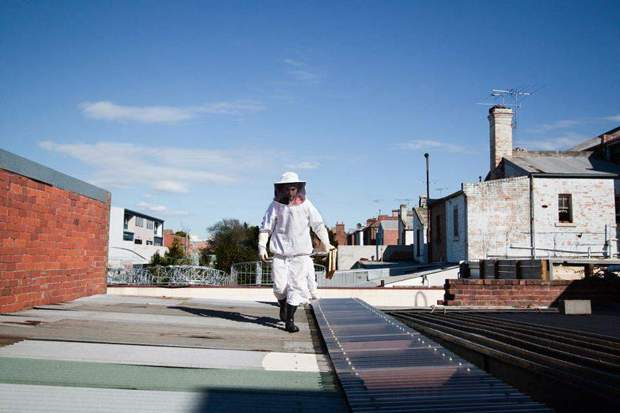The Buzz on Urban Beekeeping
Urban beekeepers in Australia are on the increase, with more and more people besotted by an unusual new love affair with backyard native beekeeping.
Urban beekeepers in Australia are on the increase, with more and more people besotted by an unusual new love affair with backyard native beekeeping. According to Sydney's Lord Mayor, Clover Moore, the new trend has brought an element of nature back to the city, where residents and native bees alike are reaping its benefits.
The Asylum Seekers Centre community garden in Surry Hills is currently home to several hundred sugarbag bees. Volunteer Jess Perini says that asylum seekers are “hooked” on the beauty of the tiny bees, which produce roughly one kilo of sugarbag honey – an expensive, nutritious variety – a year. Not only do the creatures add to the splendour and biodiversity of the garden, they have also helped to break down language barriers for asylum seekers.
Sydneysiders can expect the backyard beekeeping craze to stay with the instalment of native beehives in several community gardens later this year. In Brisbane, a code of practice for urban beekeeping has already been established. And in Melbourne, an organisation called Rooftop Honey offers people the chance to sponsor their own hives.
Australia is home to ten different species of stingless bees which grow to only a few millimetres. Tiny and harmless, they quite literally take the sting out of a mutually beneficial relationship. Backyard beekeepers are able to harvest their own sources of honey, while the bees find sanctuary from the destruction of their habitats from land clearing. Native bees also play an important role in balancing the natural ecosystem by pollinating native plant species and crops.
With so many environmental and community benefits, it’s not hard to see why urban beekeeping has generated such a buzz. And it’s not limited to Australia – since a ban on beekeeping in New York was overturned in 2010, the popular pastime has hit the roof on NYC's rooftops.







